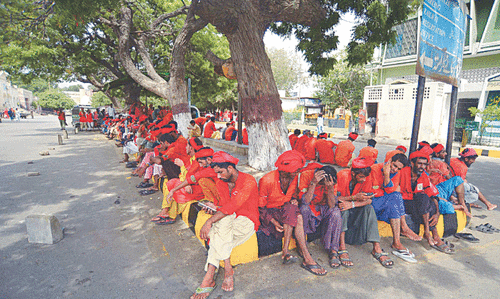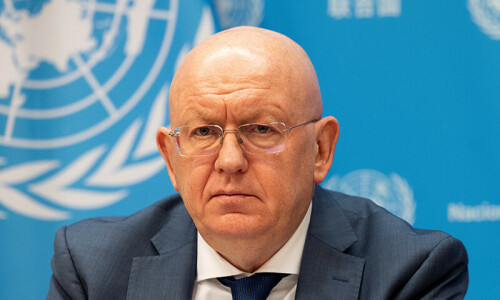URDU short story is now over 100 years old, though the reply to the question ‘When did it exactly begin?’ may be a bit disputed.
Urdu’s three different short story writers are mentioned as ‘the real pioneer’ of the genre. Some believe that Munshi Premchand (1880-1936) was Urdu’s first short story writer and his short story ‘Dunya ka sab se anmol ratan’ that appeared in a 1907 issue of Zamana, Kanpur, is Urdu’s first short story. Another view is that Qurratul Ain Hyder’s father Syed Sajjad Hyder Yildarim (1880-1943) is the one who wrote Urdu’s first short story. Titled ‘Nashe ki pehli tarang’, Yildarim’s short story appeared in the October 1900 issue of Muaarif, a magazine published from Aligarh. But some critics believe that Yildarim’s story was a translation from the Turkish language and, hence, cannot be considered among the original works. Some critics are of the view that Allama Rashidul Khairi’s short story ‘Naseer aur Khadeeja’ should be considered Urdu’s first short story since it appeared in the December 1903 issue of Makhzan.
Aside from the debate about the pioneering effort, short story is today Urdu’s most popular prose genre just as ghazal is the most popular genre when it comes to Urdu poetry. During this long journey of over 100 years, Urdu short story has indeed produced some great writers and some of the finest pieces of Urdu prose. But it was not all that smooth and Urdu short story has passed through different phases. Dr Farman Fatehpuri in his book Urdu fiction ki mukhtasar tareekh has divided it into four phases. According to Farman Sahib, the first phase began in or around 1900 and lasted for about 30 years. This early phase had a marked tendency towards reformation and romanticism. In addition to Premchand, Yildarim and Rashidul Khairi, some other prominent names of this era include Niaz Fatehpuri, Majnoon Gorakhpuri, Sultan Hyder Josh and Hijab Ismaeel (later Hijab Imtiaz).
Another well-known critic of Urdu fiction Prof Vaqar Azeem divides this first phase further into two parts and, according to him, Urdu short story’s first phase ended when the First World War broke out. He said the war influenced the subcontinent’s society in many ways and that could be seen in the short stories written after the war.
The second phase, or the third if you like, beginning in the early 1930s and lasting till independence in 1947, witnessed a great political awareness and activity. Not only had the western literary influence become quite prominent but the advent of progressive literary movement too had taken the subcontinent’s literary world by storm. Premchand died in 1936 but he wrote some of the finest short stories that Urdu can truly be proud of. In this writer’s personal opinion, Premchand’s short story ‘Kafan’, or the shroud, is not only among his best ones but it can also be dubbed as one among the best in Urdu. A large number of good short story writers emerged in this era and among them were Ahmed Ali, Ali Abbas Hussaini, Aziz Ahmed, Saadat Hasan Manto, Ismat Chughtai, Mumtaz Mufti, Ghulam Abbas, Rajinder Singh Bedi, Krishan Chandr and Ahmed Nadeem Qasmi. Some of them kept on writing in the post-independence era as well and are rightfully known as the shining stars. Some short stories written by Manto, Ismat, Qasmi, Mufti, Bedi, Ghulam Abbas, Krishan Chandr and some other writers may be ranked among the best in the history of Urdu literature. For instance, Manto’s ‘Dhuvaan’, ‘Kaali shalwaar’, and ‘Hatak’; Ali Abbas Hussaini’s ‘Mela ghoomni’; Bedi’s ‘Garam coat’ and ‘Lajvanti’; Qasmi’s ‘Hiroshima se pehle, Hiroshima ke baad’and ‘Parmisher Singh’; Ghulam Abbas’s ‘Aanandi’, ‘Katba’ and ‘Overcoat’; Ismat Chughtai’s ‘Chothi ka jora’ and ‘Nannhi si jaan’; Balvant Singh’s ‘Jagga’, Upendranath Ashk’s ‘Palang’; Mumtaz Mufti’s ‘Aapa’; and in the later era Ashfaq Ahmed’s ‘Gadarya’ are the short stories that Urdu literature may be proud of.
The next phase of Urdu short story began in 1947 and ended around the early 1960s. The short stories written in the post-independence era reflect an overwhelming sense of shock over the mayhem that took place in the wake of mass migrations. Secondly, after 1947, Urdu literature was being created in two different countries instead of one and this too can be felt in the short stories created in this period. Among the writers who wrote some remarkable short stories was Qurratul Ain Hyder, too, but she later turned to novel and is considered one of the greatest Urdu novelists. Others that earned name in this era include Intizar Hussain, Shaukat Siddiqi, Ashfaq Ahmed, Qudratullah Shahab, Hajra Masroor, Khadija Mastoor, Agha Babar, Jameela Hashmi, Razia Fasih Ahmed and many, many more.
A modernist wave hit Urdu short story in the phase that began in 1960s but it produced some new and truly remarkable short story writers. Their number is so great that it is impossible to name them all in these columns. However, mentioning just a few ones is inevitable, especially writers such as Asad Muhammad Khan, Nayyar Masood, Saleemur Rahman, Anwer Sajjad, Khalda Hussain, Muhammad Mansha Yaad, Rasheed Amjad, Zaheda Hina, Mustansar Hussain Tarar, Hasan Manzar and many others.
I apologise for having dropped many names for want of space. But this is in no way a complete history of Urdu short story and the purpose is to introduce the readers to the richness of Urdu short story. Since it is very difficult for the common reader to read every story of every writer, mentioning a few names might be helpful. Another way of helping the readers is to present in a volume a selection of short stories of some truly good writers. Of late, Oxford University Press has been bringing out selected works of well-known short story writers of Urdu. Asif Farrukhi, a critic and remarkable short story writer, is the editor of Oxford’s series titled ‘Urdu afsane’. The first book in the series was a selection of Manto’s short stories. Lately, two new such selections, those of Ghulam Abbas and Hasan Manzar, have been published. One hopes more such selections are on the way.
Published in Dawn, May 19th, 2014












































Dear visitor, the comments section is undergoing an overhaul and will return soon.